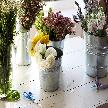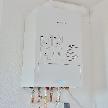
DIY Tips: Veneering Wood

- Category :Decoration
Any average piece of wood can have a beautiful face when a thin sheet of exquisitely grained stock is glued to it. In a simple yet carefully done procedure, an ordinary table of white pine or gumwood can be made to appear like walnut, rosewood, mahogany, zebrawood, cherry, or any of the exotic woods. Plywood sheets are designed with numerous types of veneer coating in raw and completed states.
Veneers can be created or bought. Imitation veneers are also sold in rolls and sheets in a great several patterns.
Any average piece of wood can have a beautiful face when a thin sheet of exquisitely grained stock is glued to it. In a simple yet carefully done procedure, an ordinary table of white pine or gumwood can be made to appear like walnut, rosewood, mahogany, zebrawood, cherry, or any of the exotic woods. Plywood sheets are designed with numerous types of veneer coating in raw and completed states.
Veneers can be created or bought. Imitation veneers are also sold in rolls and sheets in a great several patterns.
Although most veneers are used chiefly for decorative purposes, some are also utilized to make a joining stronger. For this purpose, 1/4-inch plywood is popular. Poor craftsmanship in veneering and in pieces underlying veneers nourished a prejudice against this kind of carpentry for several years.
Modern glues and care in conditioning of wood now prevent the warping and peeling that caused so a lot of problems years ago.
Ordinarily, veneer is cut from virtually all species of trees that bear an interesting grain, by saving, slicing, or rotary methods. Veneers are usually 1/28 inch thick. Sawed veneer is made in long, narrow strips, typically from flitches picked out for figure and grain. The two sides of the sheet are evenly firm and strong, and either side can be glued or exposed to view having the same results. Sliced veneer is also cut in the form of long strips by moving a flitch or block on a heavy knife. The rotary-cut process creates continuous sheets of flat-grained veneer by rotating a log against a knife. The back-cut process, the half-round process, and other alterations of straight rotary-cutting are employed to bring about highly figured veneer from stumps, burls, and other irregular parts of logs. In these procedures, a part of a log, stump, or burl s laid off center in a lathe and is rotary-cut into little sheets of veneer. All rotary-cut veneer bears an open and a closed side, although it could be hard to discern one from the other when the veneer is well cut. When rotary-cut veneer is used for faces, the checked or open side should, if possible, be the glue side. Since veneer is not ordinarily resurfaced prior to its use, it should be cut carefully. If the veneer is nicely cut, there is no appreciable difference in any property except the appearance of wood from veneer created by any of these processes. Veneer chosen to be glued must be (1) uniform in thickness, (2) smooth and flat, (3) free from huge checks, decay, or other quality-reducing features, and (4) straight-grained. For lower classes of plywood, however, some of these requisites may be altered. The veneers are kept in succession as they are cut and numbered so that they can be paired in the finished panel.
To produce a veneered panel or table top, choose the wood carefully from clear, straight-grained, well seasoned wood. If narrow boards are employed (even 2 or 3 inches in width), odds of warping are minimized.
The surface should be squared and planed perfectly smooth and flat in every direction using a jack plane. Be sure that the core stock is of the same thickness at all points. Cut the core to size and shape and sand using No. 1 sand paper.
On this core, an inexpensive straight-grained veneer, known as crossbands, is initially applied. These are glued at right angles to the core strips. These crossbands must first be laid out on the board and connected edge to edge using a veneer tape or other gummed tape.
The veneer is then clamped to the edge between two pieces of waste stock on which a protective paper coating was laid. A 1/2 -inch excess crossband veneer must protrude along every edge.
Disperse glue over the face side of the core; lay on cross-bands and tack gently to the core with 3/4-inch No. 20 brads, If brads project more than 1/4 inch, cut out the heads to this size using pliers. To avoid warping, both sides of the core must be veneered, the second side done in the same way as the first surface and glued at the same time. On each set of crossbands, place a couple of sheets of newspaper, then a flat board, or caul. The entire pack—core in the center, with crossbands, paper, and caul—is then laid into a veneer press for 12 hours.
Care should be taken to keep glue off veneers (it causes curling) or the cauls (it induces blemishes). Waxing the cauls or soaping them allows for easy glue removal. When the crossband has dried, take out caul, brads, and veneer tapes. Trim the edges of the veneer flush with the core using a veneer saw or a plane, knife, or chisel.
Edges of veneered stock are generally veneered in the same fashion. They must be cut a bit wider than needed and cut back after they've been tacked and glued. Bar clamps are utilized to apply pressure to both edges.
The great thing about the finished grain depends on the artistry with which the final veneer is put together, cut, and placed. A typical assembly is the diamond match, where 4 similar pieces are laid in a square in various positions so that the grain appears to make a diamond in the center. Other patterns stress the stripe, a mottled effect, a burl (from a lump on the tree), a crotch (where the branch of the tree grew), and stump wood (from the base). Other effects attained are interwoven or fiddleback, a cross or X pattern, a herringbone, a woven pattern, and a repeat pattern.
Related Articles
Cheer Up Your Home Space With These 10 Diy Floral Arran
An apt assortment of flowers by combining different blooms and foliage is necessary to produce beautiful floral arrangements for home décor, weddings or any other event. Through this piece of writing, you can learn a number of tips and tricks to make lovely floral arrangements on your own..
Tankless Vs Tank Water Heaters
Water heaters are an essential requirements now-a-days for various households residing in different cities globally, The article suggests the best possible points to compare among tankless and tank water heaters and accordingly suggest the users to choose the best among two by understanding their specific features..
Tips For Verifying The Authenticity Of Packers And Move
Packers and Movers are the best ways for shifting the household goods to some other place safely with complete security too. But, what will be the essential tips to verify the genuineness of that particular Packers and Movers company? The article discusses the detailed list of points to be kept in mind to investigate the same very easily..








